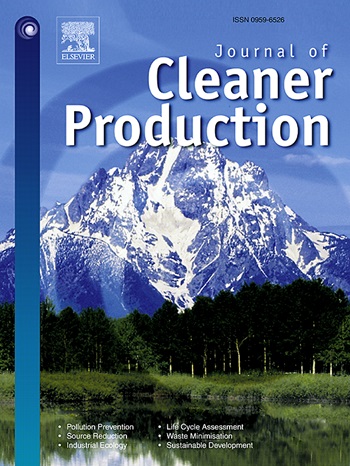Synthesis and characterization of polymeric membrane contactors for biogas upgrading: Experimental validation and AI-based performance prediction
IF 10
1区 环境科学与生态学
Q1 ENGINEERING, ENVIRONMENTAL
引用次数: 0
Abstract
Biogas is a vital renewable energy source that requires the efficient separation of acid gases, such as CO2 and H2S, to enhance its energy value and prevent corrosion of equipment or pipelines. Gas–liquid membrane contactors (GLMCs) are emerging as the most promising option for upgrading biogas. This study aims to develop an efficient indigenous flat-sheet GLMC system for separating CO2 from biogas using various hydrophobic porous membranes, including polyvinylidene fluoride, polyvinyl chloride, and polystyrene, using aqueous absorbents such as sodium hydroxide (NaOH) and monoethanolamine (MEA). The polymeric membranes were synthesized via the phase inversion technique and characterized for their structural and morphological properties, contact angle, surface roughness, crystallinity, and functional groups. The effects of the liquid absorbent's flow rate and concentration on CO2 separation were also investigated. Results showed that the polystyrene membrane exhibited the highest CO2 absorption flux of 10.71 × 10−2 mol/m2·s when using 0.2 M NaOH as the absorbent, with constant gas and liquid flow rates of 0.4 L/min and 0.5 L/min, respectively. Furthermore, different AI models were developed using the experimental data to predict the mass transfer rate of CO2 in the membrane contactor. A comparative assessment revealed that the extra trees regressor model was the most accurate model for predicting GLMC performance in biogas separation.

沼气升级用聚合膜接触器的合成与表征:实验验证与基于人工智能的性能预测
沼气是一种重要的可再生能源,需要有效分离CO2和H2S等酸性气体,以提高其能量价值并防止设备或管道腐蚀。气液膜接触器(GLMCs)正在成为沼气升级最有前途的选择。本研究旨在开发一种高效的国产平板GLMC系统,该系统使用各种疏水多孔膜(包括聚偏氟乙烯、聚氯乙烯和聚苯乙烯),使用氢氧化钠(NaOH)和单乙醇胺(MEA)等水吸附剂,从沼气中分离二氧化碳。通过相转化技术合成了聚合物膜,并对其结构和形态、接触角、表面粗糙度、结晶度和官能团进行了表征。考察了吸附剂的流速和浓度对CO2分离的影响。结果表明,以0.2 M NaOH为吸附剂,气液流速分别为0.4 L/min和0.5 L/min时,聚苯乙烯膜的CO2吸收通量最高,为10.71 × 10−2 mol/m2·s。此外,利用实验数据建立了不同的人工智能模型来预测CO2在膜接触器中的传质速率。对比分析表明,额外树回归模型是预测GLMC在沼气分离中的性能最准确的模型。
本文章由计算机程序翻译,如有差异,请以英文原文为准。
求助全文
约1分钟内获得全文
求助全文
来源期刊

Journal of Cleaner Production
环境科学-工程:环境
CiteScore
20.40
自引率
9.00%
发文量
4720
审稿时长
111 days
期刊介绍:
The Journal of Cleaner Production is an international, transdisciplinary journal that addresses and discusses theoretical and practical Cleaner Production, Environmental, and Sustainability issues. It aims to help societies become more sustainable by focusing on the concept of 'Cleaner Production', which aims at preventing waste production and increasing efficiencies in energy, water, resources, and human capital use. The journal serves as a platform for corporations, governments, education institutions, regions, and societies to engage in discussions and research related to Cleaner Production, environmental, and sustainability practices.
 求助内容:
求助内容: 应助结果提醒方式:
应助结果提醒方式:


